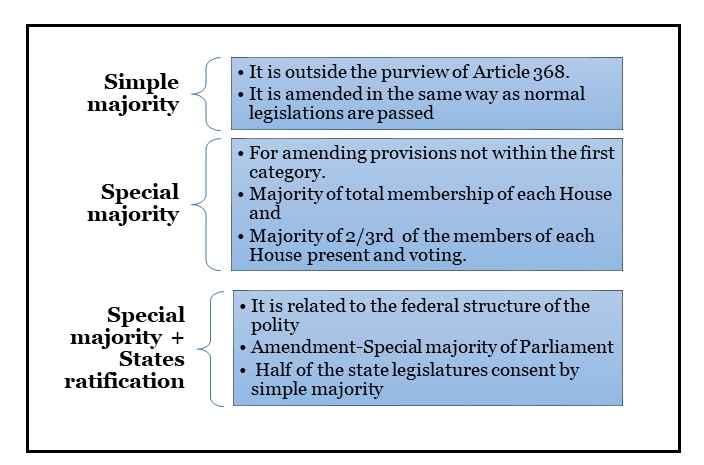The Law Ministry has recommended the Ram Nath Govind panel to examine if the constitutional amendments required to facilitate simultaneous elections would require ratification by the States.
|
Ram Nath Govind Panel |
|
Article 368 in Part XX of the Constitution deals with the powers of Parliament to amend the Constitution and its procedure.

States Ratification in the U.S.
|
Entrenched Provisions |
Article |
|
Election to the President of India |
Article 54 and 55 |
|
Extend of the executive power of the Union or State government |
Article 73 and 162 |
|
Union judiciary |
Article 124-147 |
|
High court |
Article 214-231 |
|
Distribution of legislative powers between the Union and the states |
Article 245 to 255 |
|
Any of the lists mentioned in 7th schedule |
Union list, State list, Concurrent list |
|
Representation of states in the Parliament |
Article 82 |
|
Goods and Services Tax Council |
Article 279-A |
|
Power of Parliament to amend the Constitution and its procedure |
Article 368 itself |
The Constituent Assembly debates show that Dr. B.R Ambedkar was in favour of ratification by States for amending certain constitutional provisions to ensure that the federal structure of the Constitution remains unaltered.
52nd Amendment Act, 1985 - Introduced anti-defection law in India which became the part of 10th Schedule of the Constitution.
97th Amendment Act, 2011 - Gave constitutional status to Cooperative Societies.
Law Commission Report (2018) on Simultaneous Elections
Reference